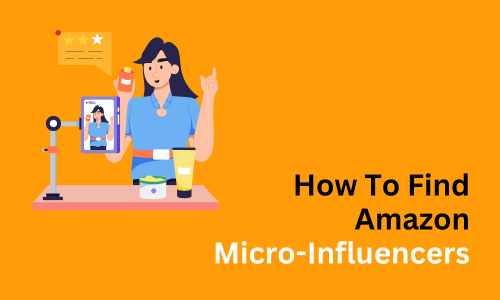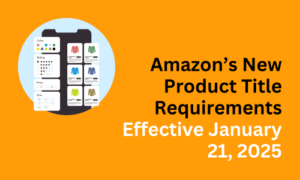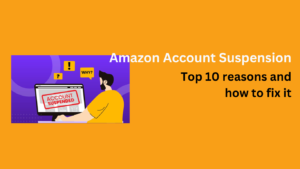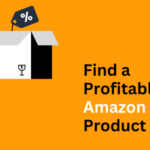Searching how to find Amazon Micro-Influencers? If you’re a brand or seller on Amazon, you’ve likely considered using influencers to drive awareness and sales. Micro-influencers, creators with a smaller but highly engaged following, have become a crucial component in Amazon marketing. Their authentic voice, niche expertise, and close connections with their audiences make them ideal partners for building brand trust and driving conversions. Here’s a comprehensive guide on where and how to find Amazon micro-influencers effectively.
What is an Amazon Micro-Influencer?
An Amazon micro-influencer is a creator within Amazon’s Influencer Program who promotes products via an affiliate link to earn a commission. Micro-influencers typically have audiences ranging from 1,000 to 100,000 followers, which often translates to higher engagement rates than their macro counterparts.
Amazon micro-influencers are unique because they have their own Amazon storefront, a landing page with their recommended products. When followers purchase items via the storefront, the influencer earns a commission. Unlike traditional Amazon Associates (Amazon’s general affiliate program), influencers get the benefit of a dedicated storefront where they can curate product collections, such as “Favorite Kitchen Essentials” or “Fall Fashion Must-Haves.
Benefits of working with Amazon micro-influencers
Micro-influencers are essential for brands looking to boost authenticity and engagement. They offer several unique advantages:
- Higher Engagement: Their smaller, loyal audience often results in higher engagement rates.
- Affordable Partnership Options: Micro-influencers generally charge lower fees than larger influencers.
- Niche Appeal: Many specialize in particular niches, allowing you to target specific interests and demographics.
- Authentic Content: Followers view micro-influencers as relatable, making their endorsements feel trustworthy.
8 Strategies to Find Amazon Micro-Influencers
1. Amazon’s In-Built Discovery Tools
Start by exploring Amazon’s on-site features that highlight influencers and their content.
- Amazon Live: This livestreaming platform allows influencers to showcase products in real time while interacting with viewers. Amazon Live is an excellent way to find micro-influencers who actively promote products and engage with followers.
- FoundItOnAmazon: Amazon’s #FoundItOnAmazon page aggregates influencer-recommended items. You can filter by categories to narrow down influencers in your niche, making it easier to find creators who align with your brand’s offerings
2. Leverage Social Media Hashtags
Amazon influencers are active on social media platforms like Instagram and TikTok, where they often direct followers to their Amazon storefronts. Searching through relevant hashtags can help uncover micro-influencers passionate about Amazon finds.
Popular Hashtags to Explore:
- Instagram: #AmazonFinds, #AmazonFashion, #AmazonMustHaves, #AmazonDeals, #AmazonHome
- TikTok: #AmazonHaul, #AmazonFaves, #AmazonBeauty, #AmazonInfluencer
These hashtags reveal influencers who are frequently showcasing Amazon products and can guide you to their Amazon storefront links, usually found in their bio.
3. Join Influencer Marketplaces
Influencer marketplaces make it easy to connect with Amazon influencers in a structured way.
- JoinBrands: A popular platform that specializes in connecting Amazon brands with influencers. With tools for campaign management, JoinBrands streamlines the influencer search and collaboration process.
- Collabstr: This marketplace allows brands to find influencers based on niche, audience size, and engagement rate, providing valuable metrics for informed decision-making.
4. Use Influencer Discovery Tools
Platforms like Heepsy and inBeat offer databases of influencers, enabling you to filter by platform, niche, audience size, and engagement rate. This can significantly reduce the time it takes to find influencers who meet your criteria.
5. Explore Your Brand's Existing Audience
Sometimes, your most valuable micro-influencers might already be following or engaging with your brand. Check your social media followers and existing customers to identify any influencers who might already be fans of your products.
6. Conduct Targeted Google Searches
You can use search engines to find Amazon influencer storefronts directly. Use search operators like:
- site:amazon.com/shop “influencer name”
- “Amazon storefront” + “product category”`
These search terms can lead you to curated storefronts relevant to your niche.
8. Monitor Competitor Collaborations
Analyzing the influencers your competitors are working with can provide valuable insights. If you see a micro-influencer partnering with a similar brand, it’s likely they have an audience that aligns with your target market. Following these influencers and engaging with their content can lay the groundwork for a future partnership.
Best Practices for Working with Amazon Micro-Influencers
Once you’ve identified potential influencers, consider the following best practices to optimize your collaborations:
- Define Clear Goals: Are you aiming for brand awareness, increased sales, or product feedback? Having clear objectives helps in selecting the right influencers and measuring success.
- Vet Influencers Carefully: Look at engagement rates, audience demographics, and the influencer’s niche to ensure a good fit. Avoid influencers with inflated follower counts but low engagement.
- Use Affiliate Links Strategically: Amazon’s tracking links are vital for attributing sales to your influencer campaigns. Ensure influencers understand how to set up and use these links.
- Encourage Authentic Content: Micro-influencers work best when they can authentically represent your brand. Avoid overly prescriptive guidelines and let them create content that feels natural to their followers.
- Monitor Performance: Track sales and engagement metrics from your influencer campaigns. This data can help you identify high-performing influencers for future collaborations.
Conclusion
Finding and collaborating with Amazon micro-influencers can be a powerful strategy for brands aiming to boost sales and engagement on Amazon. Whether you’re exploring Amazon’s in-built tools like Amazon Live, leveraging social media hashtags, or utilizing influencer marketplaces, there are numerous ways to connect with influencers who align with your brand.
By following these steps and best practices, you can build effective partnerships that resonate with your audience and drive long-term growth.











